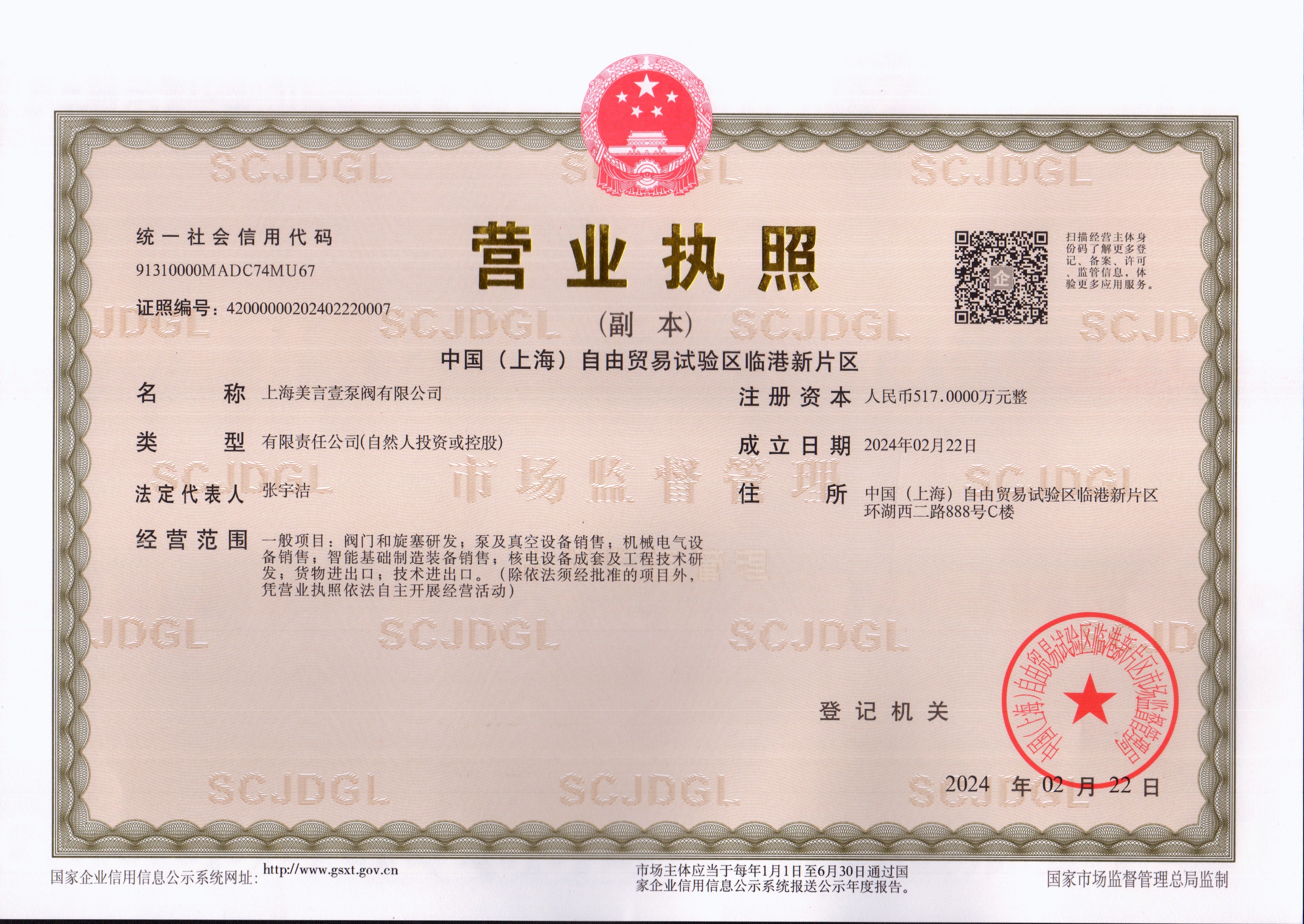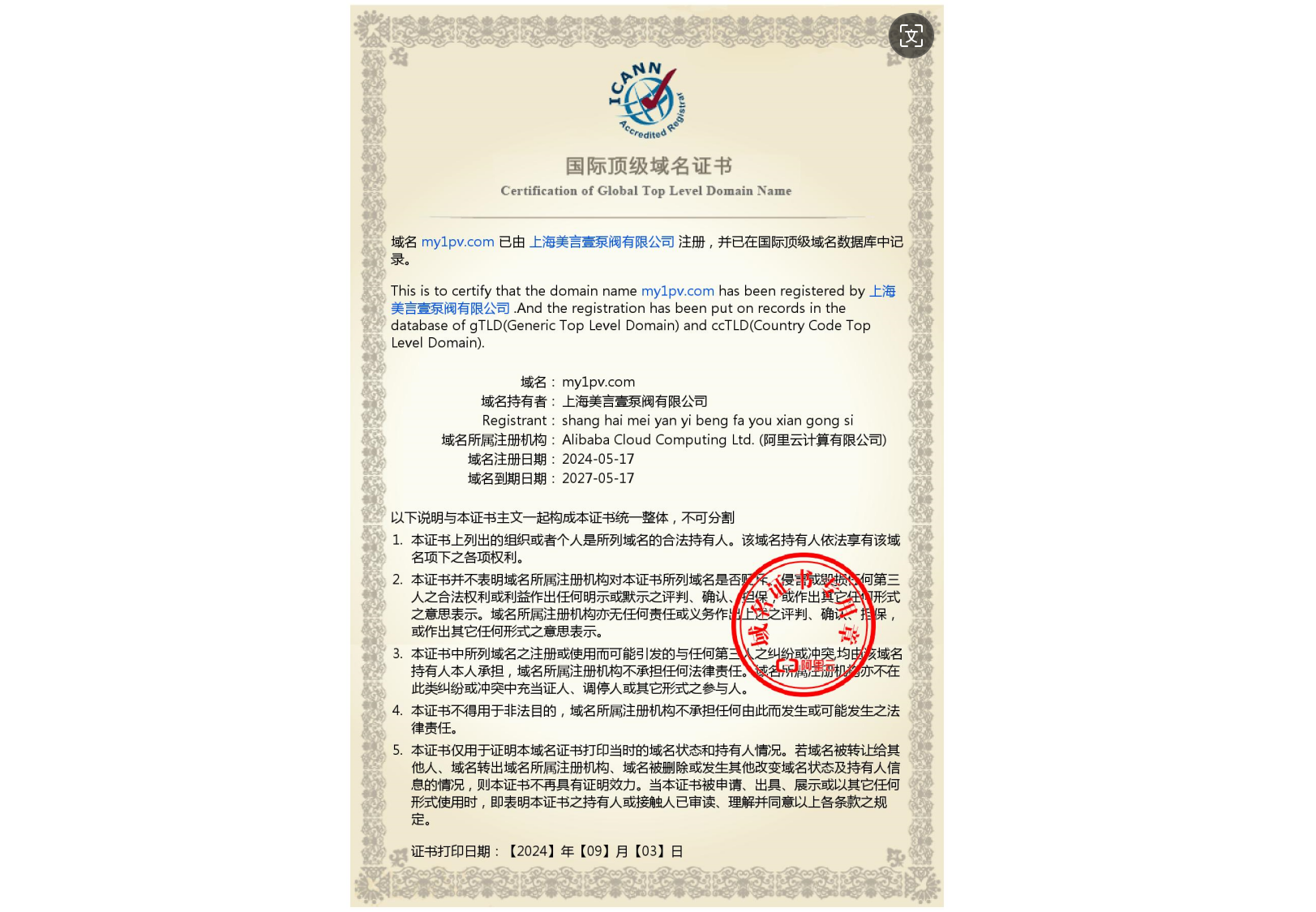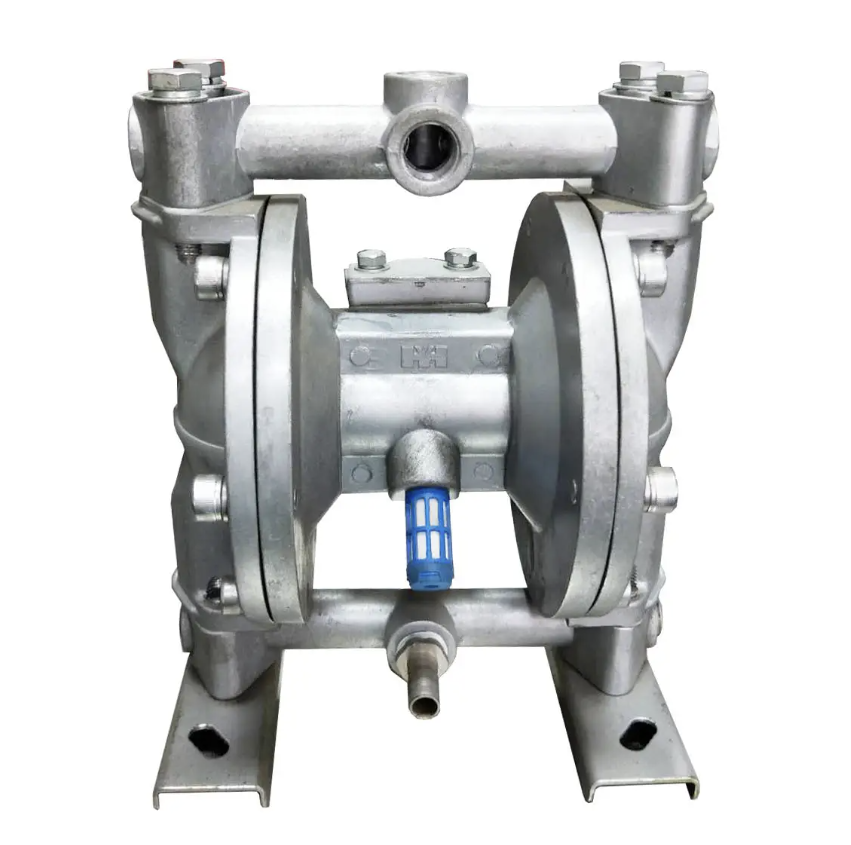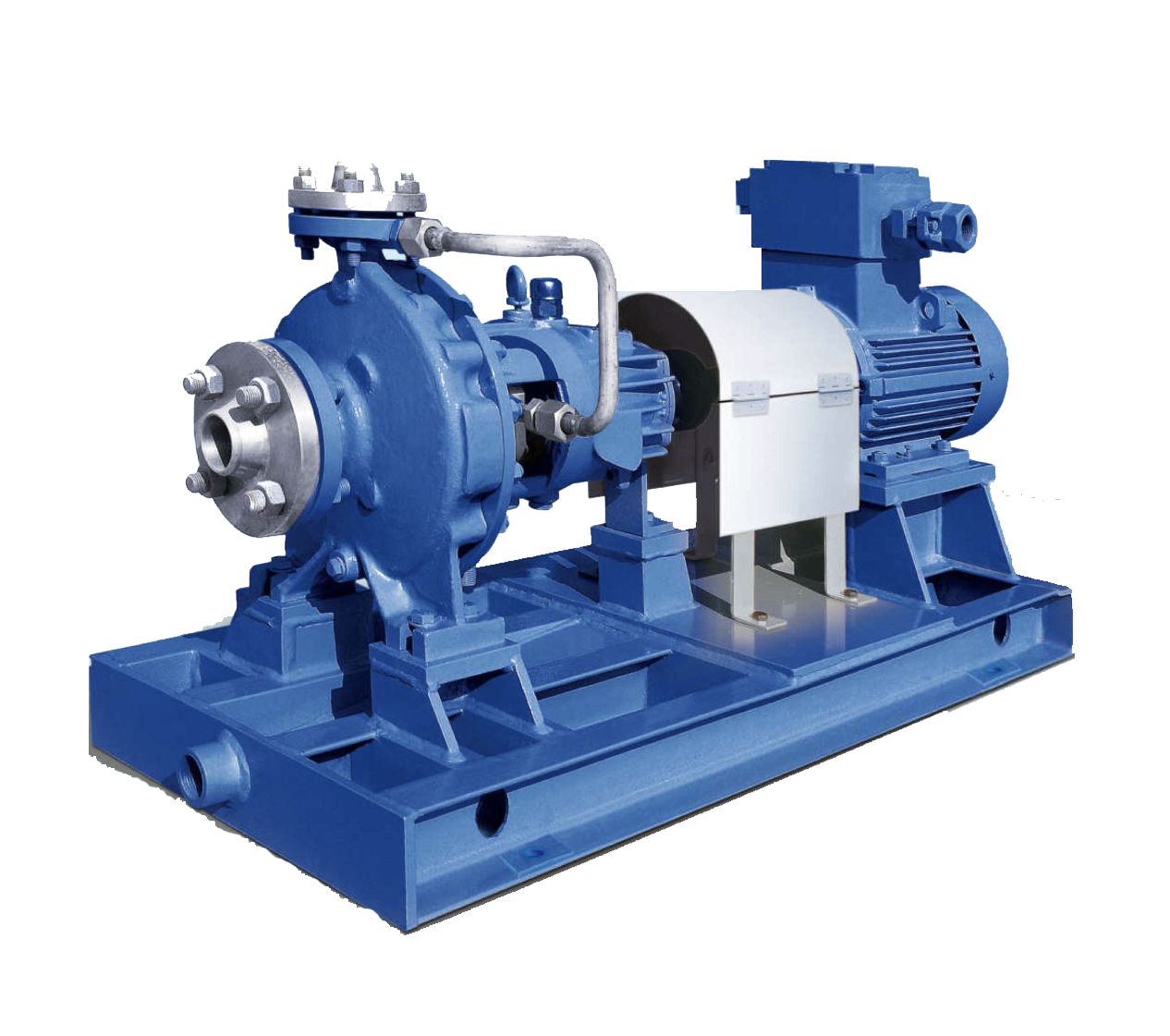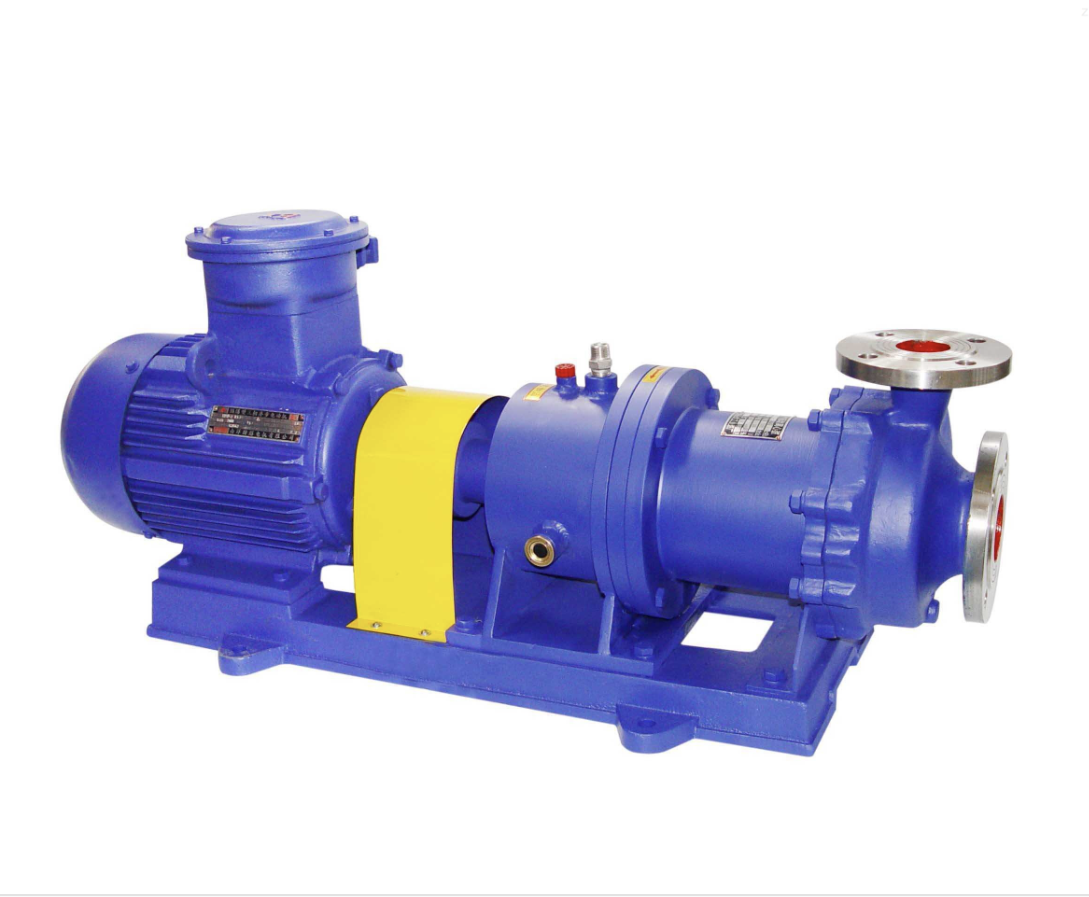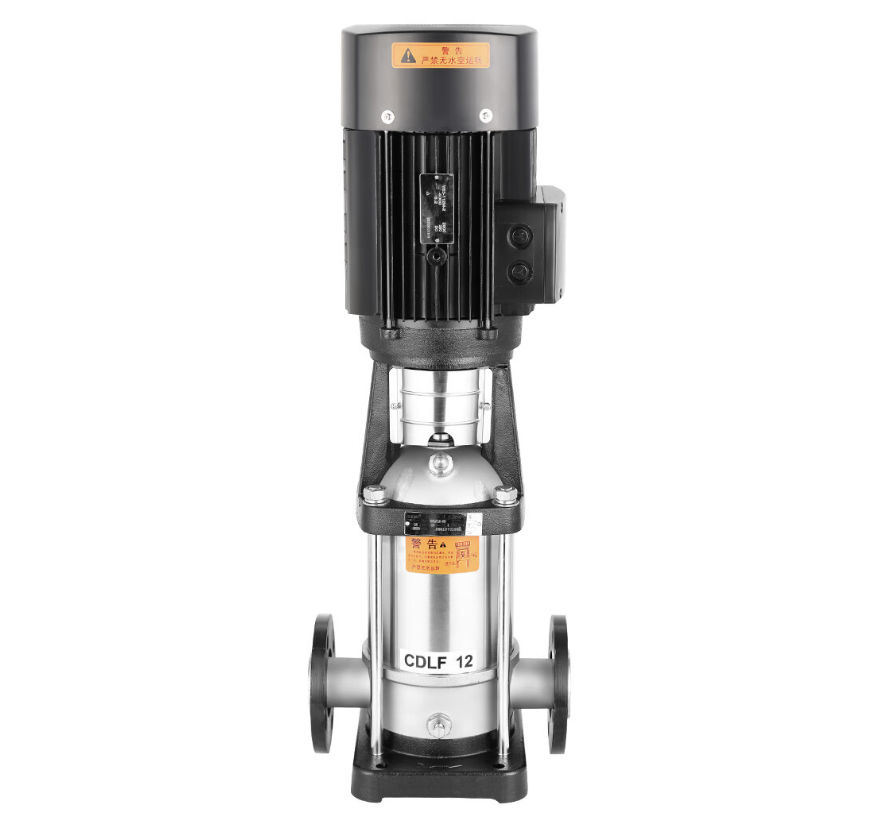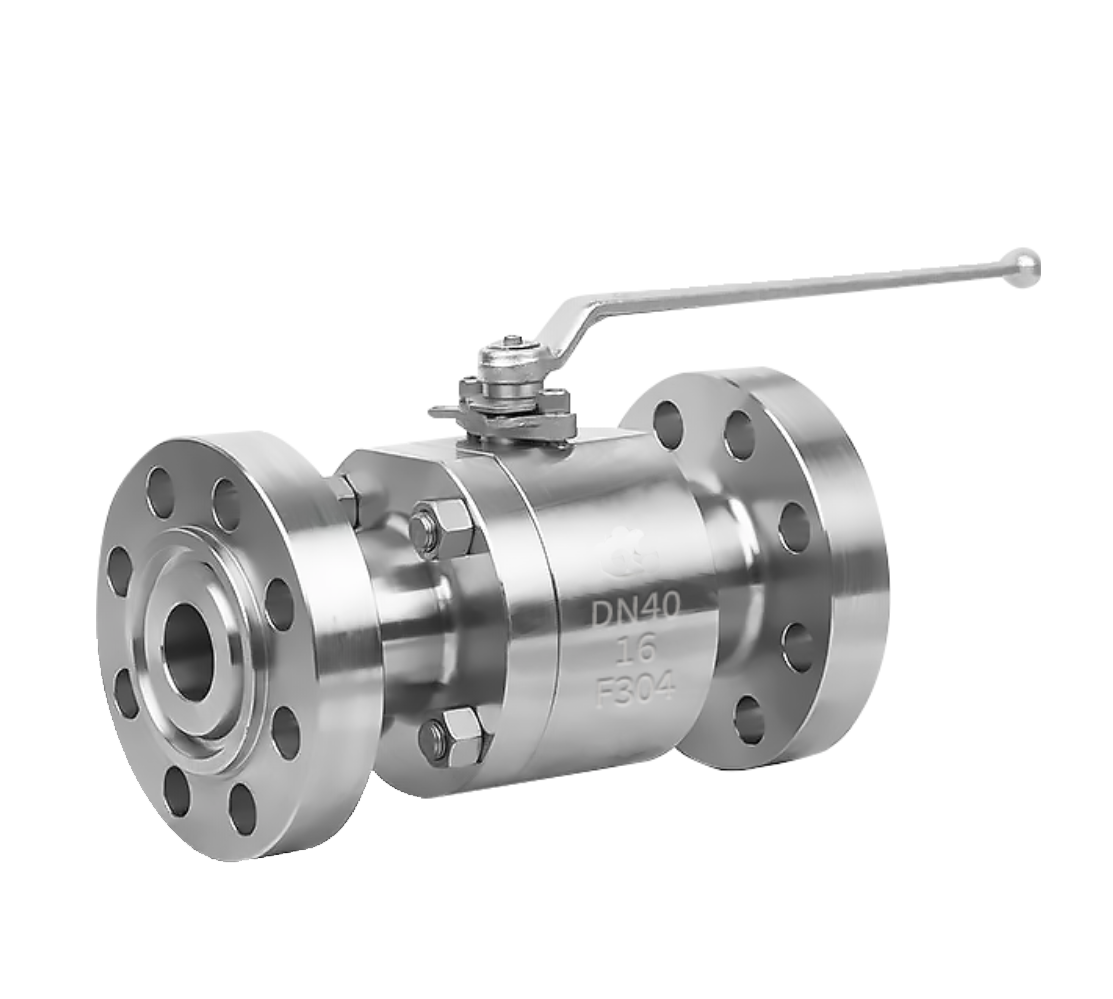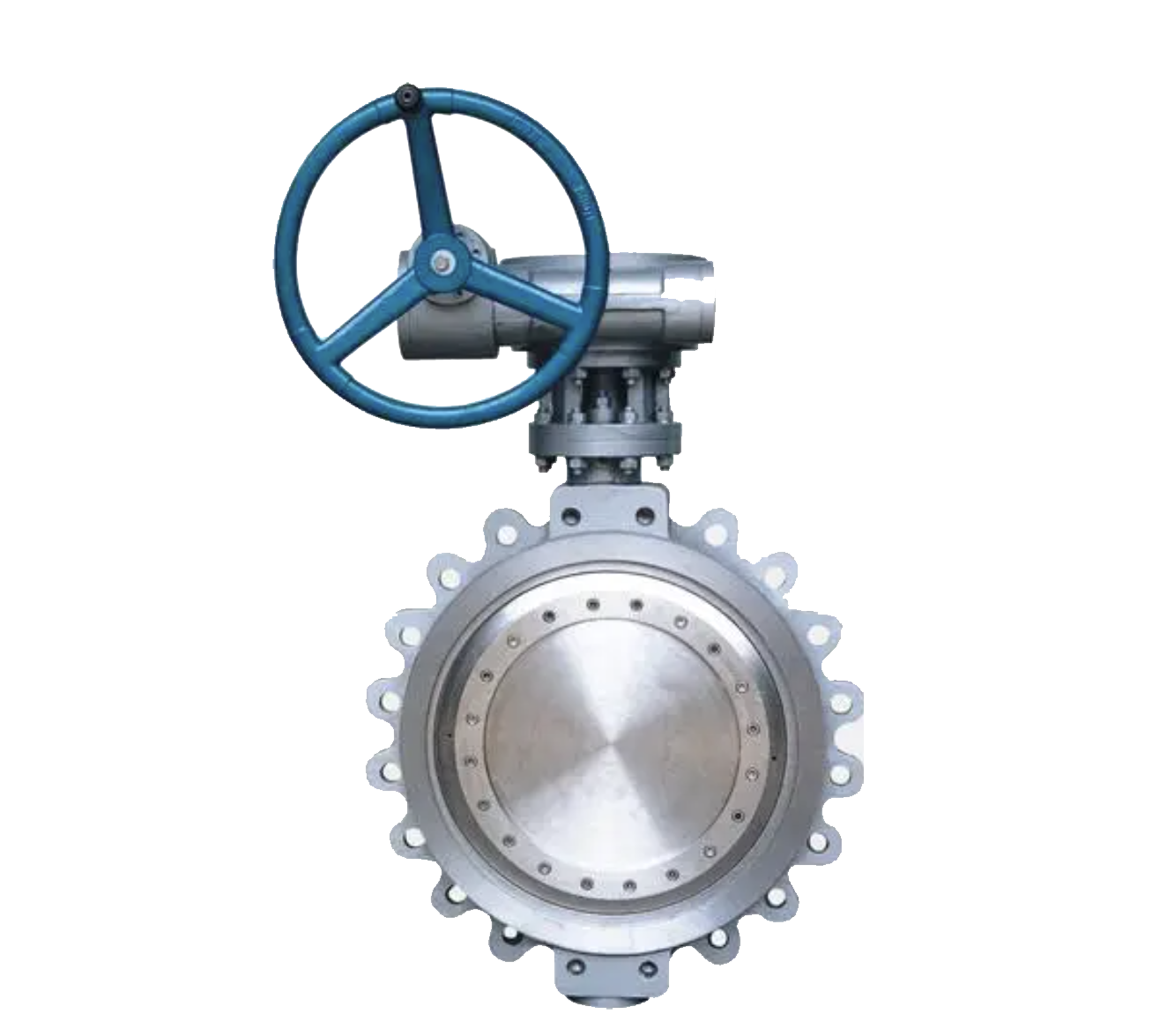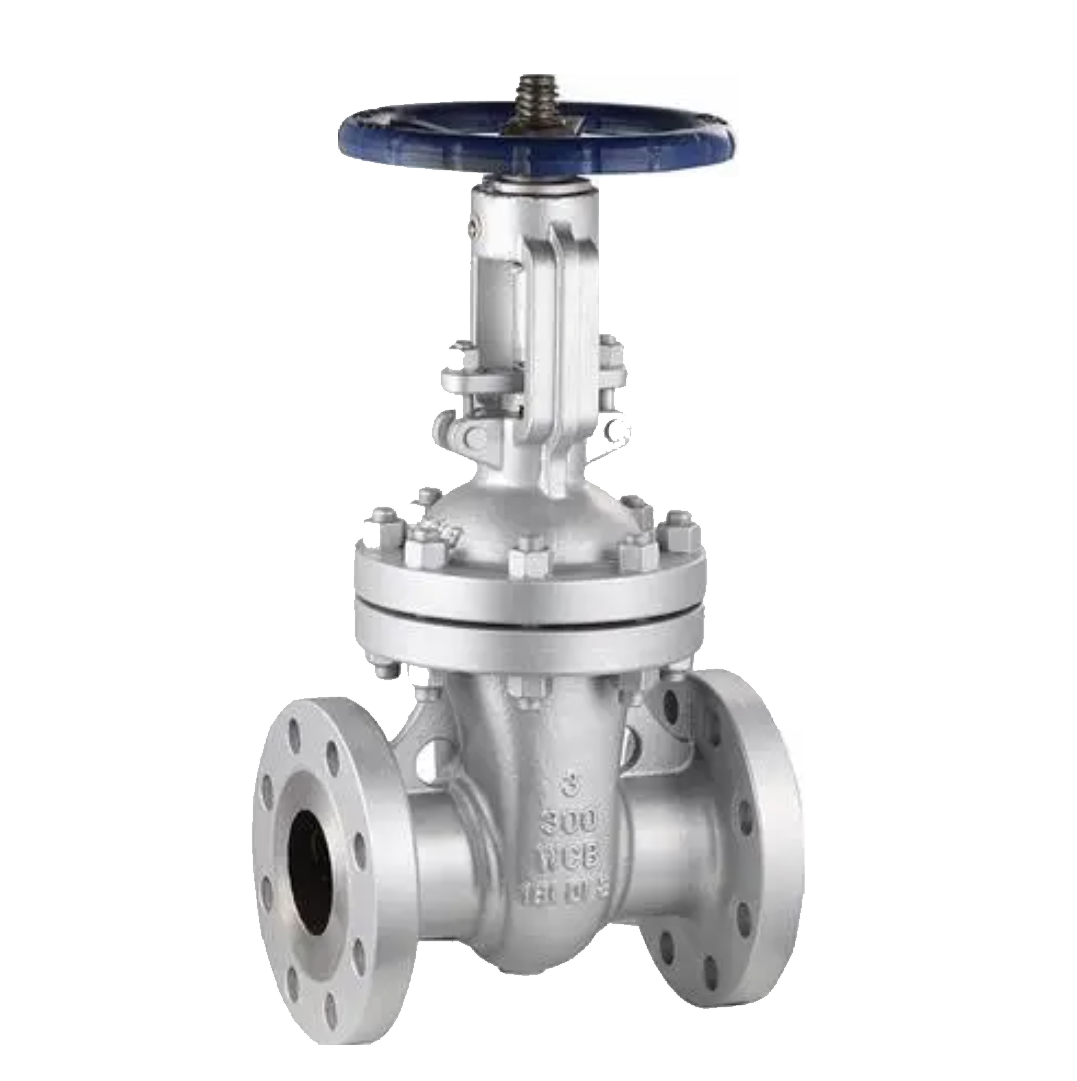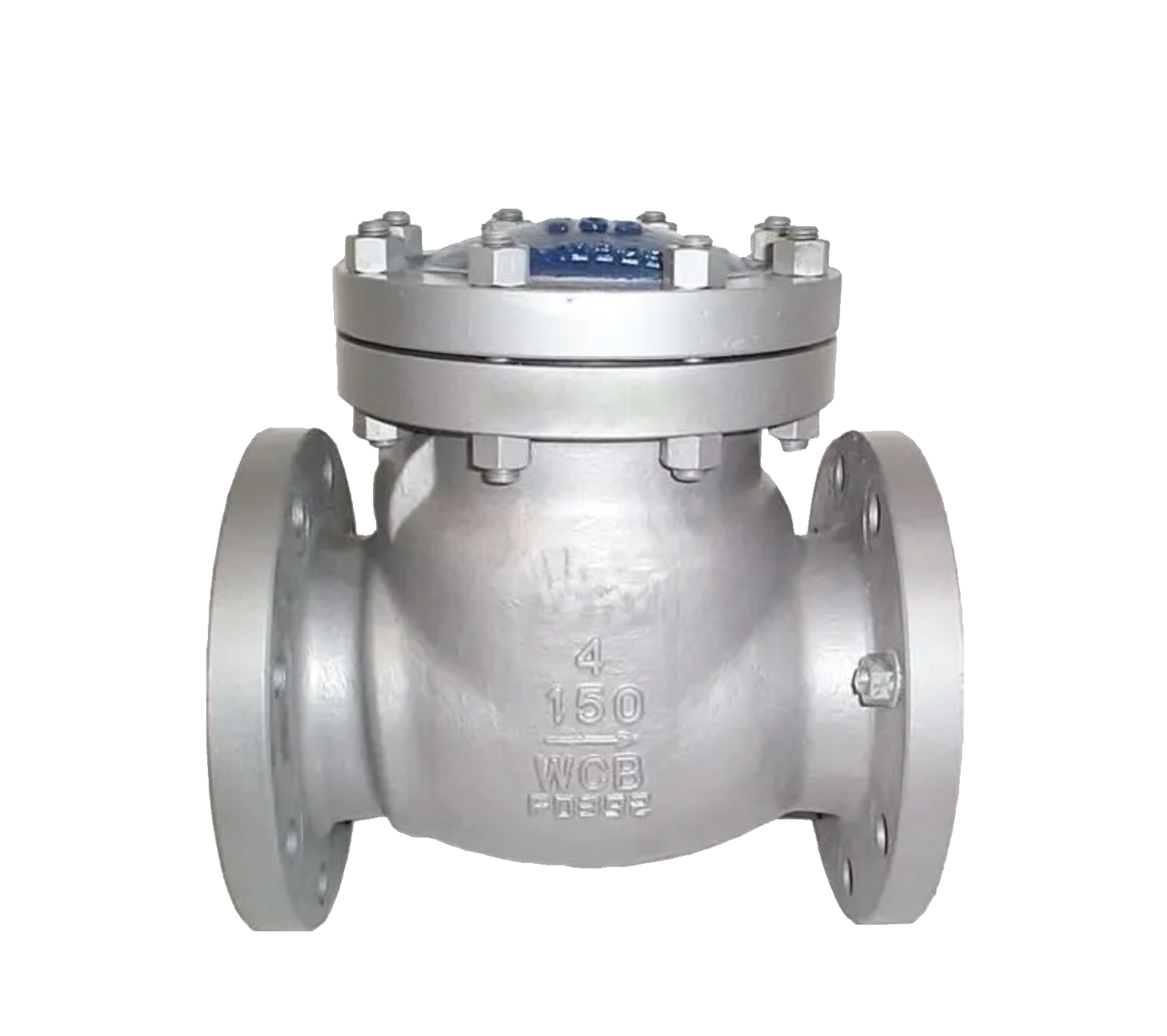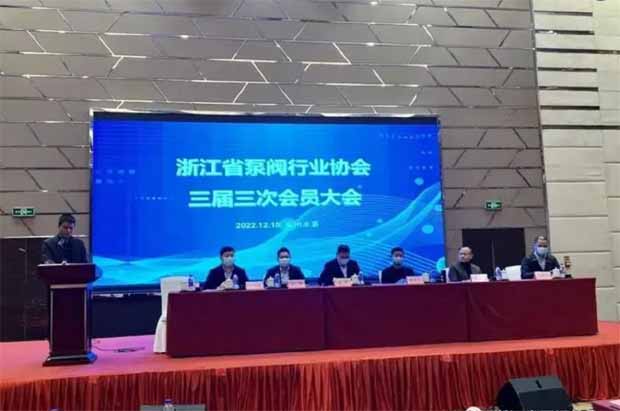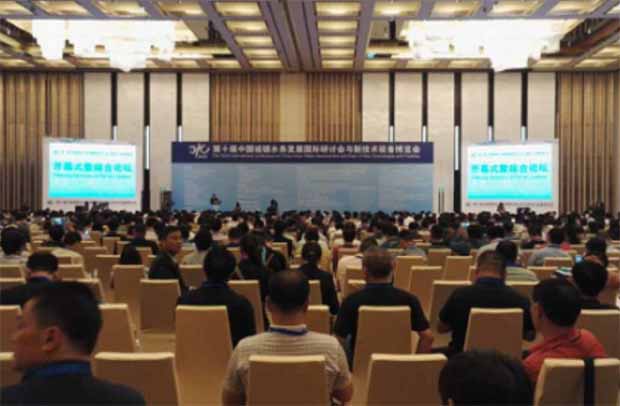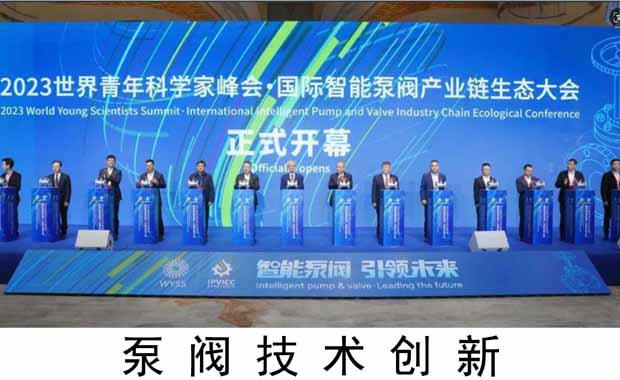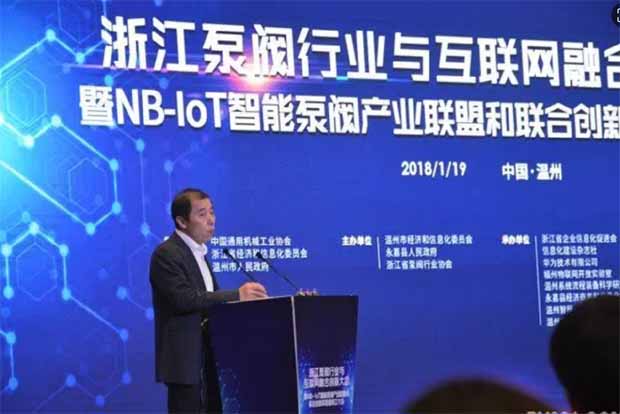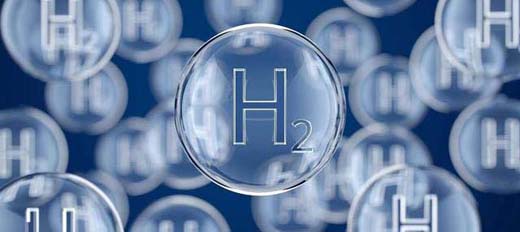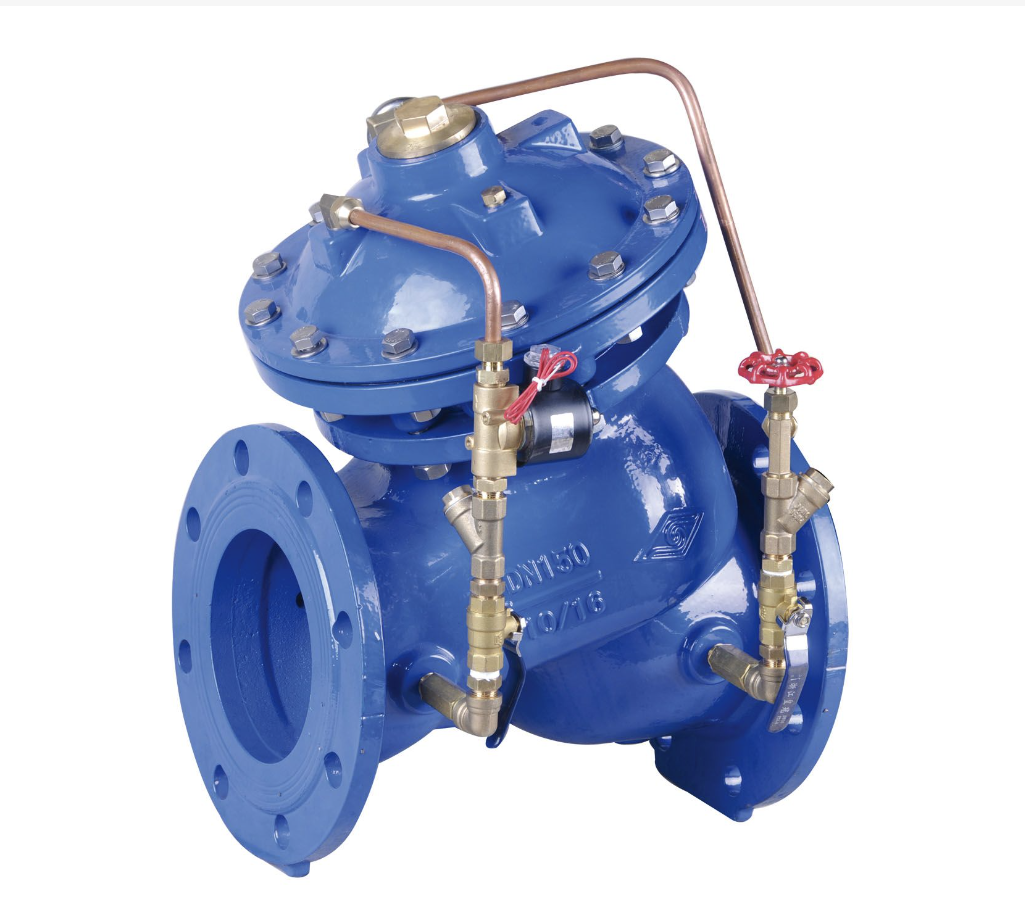Your location:

Product classification of Meiyan One Pump Valve
- ShangHai Meiyan Yi Pump & Valve Co.,LTD.
- Sales hotline:
+86 21 5640 2009 - Pump customer service:
+86 138 1691 3072 - Valve customer service:
+86 1381 6913 072 - E-mail:
my1pv@1bengfa.com
Hydraulic control valve
Hydraulic control valve is a multi-purpose valve, with a wide range of valve functions depending on the role of different accessories. It is composed of a main valve and its external needle valve, pilot valve, solenoid valve, float valve, and pipeline combination. Hydraulic control valve is a general term for a series of multi-purpose control and safety valves. Mainly including: remote control float valve, pressure reducing valve, slow closing check valve, pressure relief valve, pressure holding valve, multifunctional water pump control valve, etc. The main characteristics of the hydraulic control valve produced by Shanghai Meiyan Yi Pump Valve are: it utilizes the pressure of the medium itself and the operation of the hydraulic system in its mode of action, and can be automatically controlled, with accurate action and reliable performance. It can be widely used in daily life, production, fire protection, water supply and drainage system pipelines for control and safety purposes. All models and specifications are complete, and the pictures are for reference only. Please refer to the drawings provided by our company.
-

Diaphragm Hydraulic Control Valve
The working principle of a diaphragm type hydraulic control valve is a device that controls flow or pressure by changing the cross-sectional area of the medium flow. Its main components include valve body, valve core, driving device, and control system. During the working process, when the control system sends a signal, the driving device adjusts the valve core to the corresponding position. When the valve core is opened, the medium can smoothly flow through the valve body, achieving flow or pressure regulation. When the valve core is closed, the flow cross-sectional area of the valve body decreases, thereby increasing the flow resistance and limiting the flow rate of the medium, achieving the goal of reducing flow rate or increasing pressure. The diaphragm type hydraulic control valve produced by Shanghai Meiyanyi Pump Valve mainly refers to the sealing between the control chamber and the flow chamber of the control valve, which is isolated by a diaphragm. Like the piston type, the diaphragm type hydraulic control valve is a full range of products, but it is generally only suitable for hydraulic control valves with diameters below DN400 and pressures below PN25. It has high sensitivity and short opening and closing time.View details>>
-
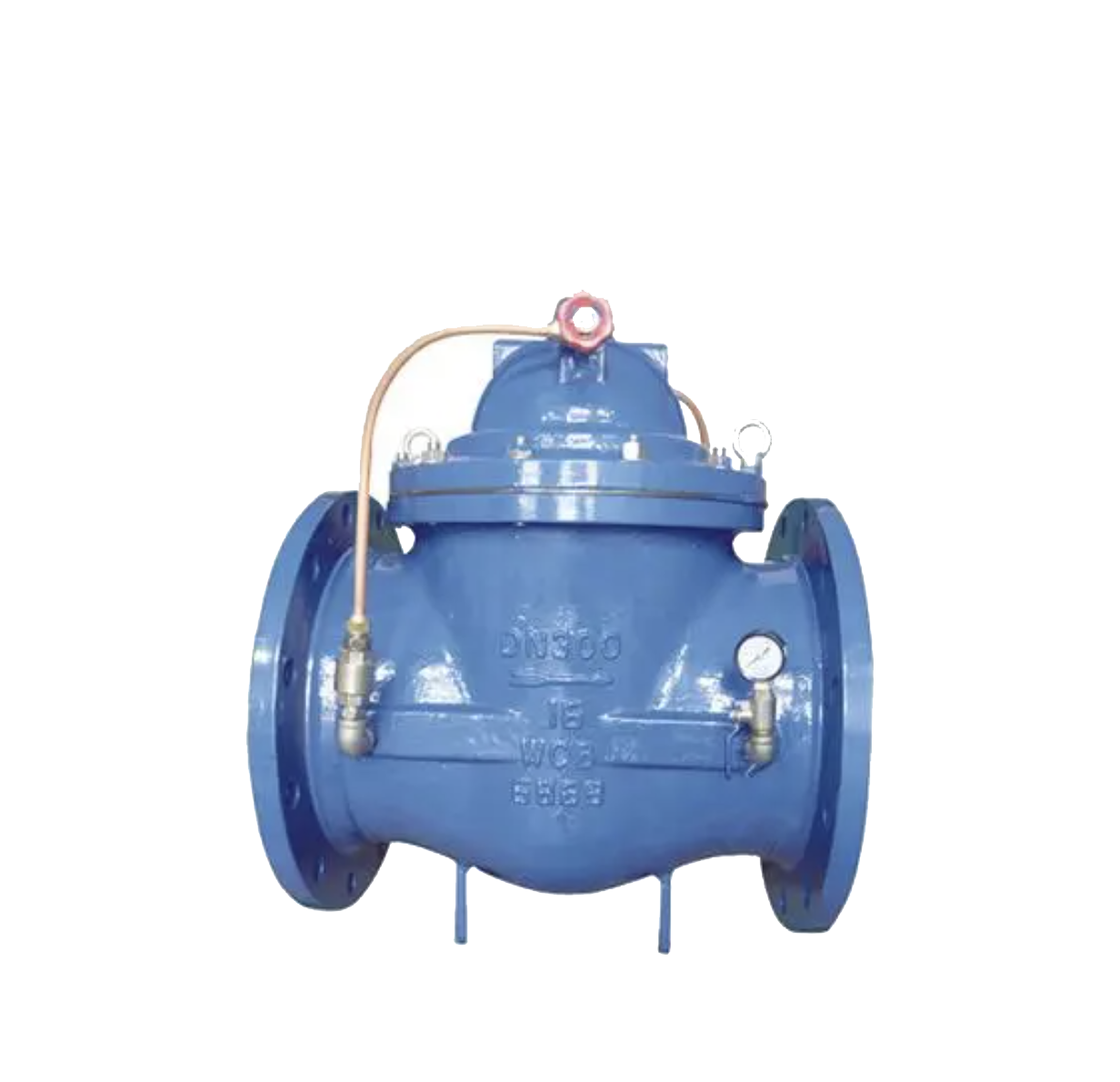
Piston type hydraulic control valve
The working principle of piston type hydraulic control valve is a device that controls pipeline flow or pressure by changing the cross-sectional area of medium circulation. Its main components include valve body, valve core, driving device, and control system. The piston type hydraulic control valve is mainly composed of a main valve, needle valve, ball valve, float valve, micro filter, etc. The structural form is a hydraulic control cut-off form, which adopts a piston type connected valve disc opening and closing form. During the working process, when the control system sends a signal, the driving device adjusts the valve core to the corresponding position. When the valve core is opened, the medium can smoothly flow through the valve body, achieving flow or pressure regulation. When the valve core is closed, the flow cross-sectional area of the valve body decreases, thereby limiting the flow rate of the medium or increasing the flow resistance, achieving the goal of reducing flow rate or increasing pressure. According to different control methods, hydraulic control valves can be divided into two types: manual control valves and automatic/electric control valves. Manual control valves adjust the position of the valve core through manual operation to achieve flow or pressure regulation. Automatic/electric control valves adjust the position of the valve core through electric drive, solenoid valves, and other devices. They are usually combined with automatic control systems and can autonomously adjust the position of the valve core according to preset parameters, achieving automatic control. The piston type hydraulic control valve produced by Shanghai Meiyanyi Pump Valve is mainly suitable for large-diameter valves with a diameter of DN400 or above and pipeline equipment with a pressure of PN25 or above.View details>>
-
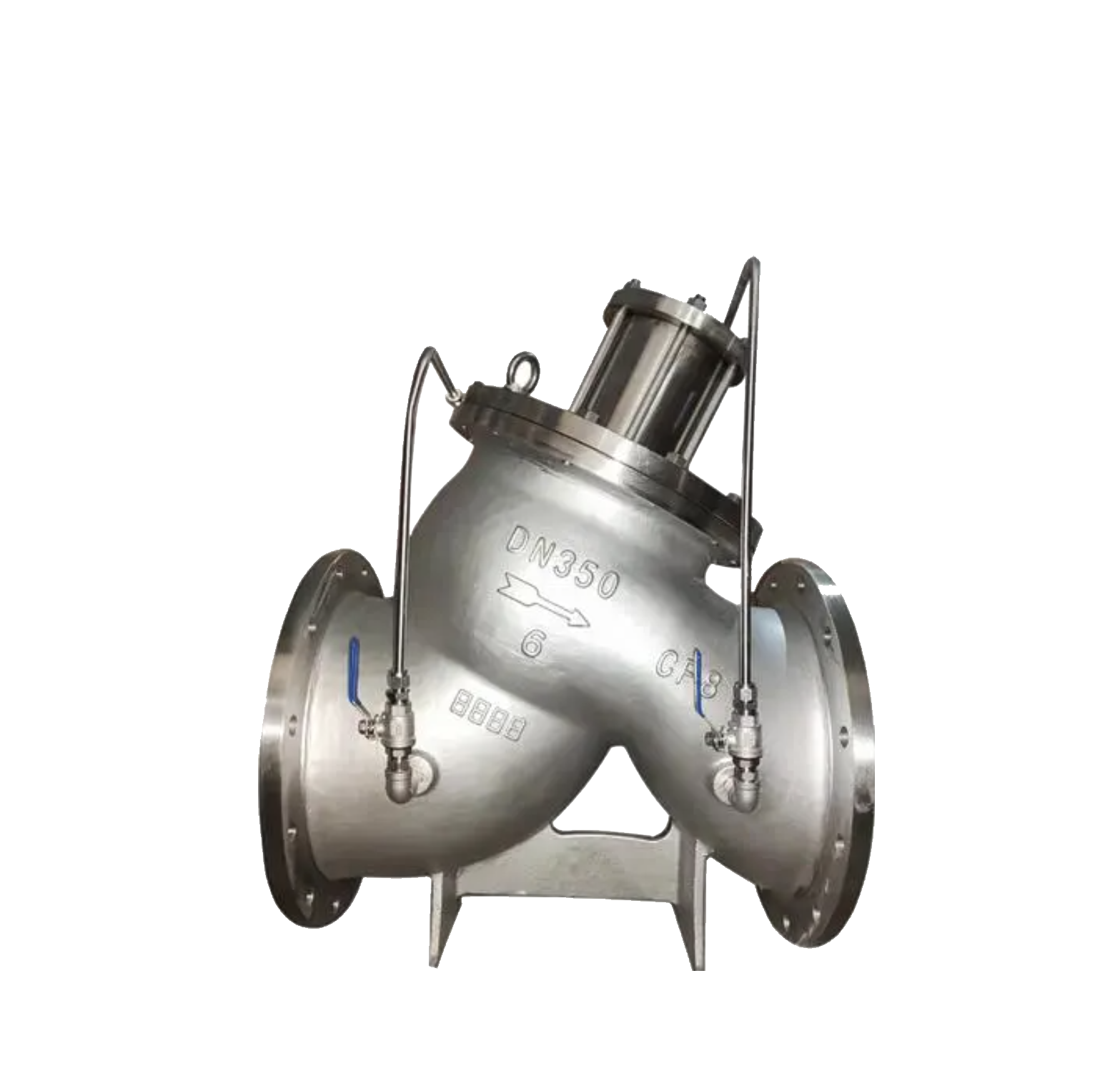
Multi functional water pump control valve
The multifunctional water pump control valve is mainly composed of a main valve, a regulating valve, and a receiving system. The valve body adopts a DC valve body, and the main valve control chamber is a dual control chamber structure of diaphragm or piston. The control chamber is added to the general hydraulic control valve, which increases the control function of the main valve and realizes the multifunctional control of slow opening, full opening, slow closing, and cutoff of the water pump outlet. It realizes the multifunctional control of the water pump outlet with one valve and one adjustment. The multifunctional water pump control valve produced by Shanghai Meiyan Yi Pump Valve has the following working characteristics: it has good water hammer prevention effect, integrates technologies such as slow opening, check speed closing, and slow closing to eliminate water hammer, and prevents damage to the water supply pipeline and water pump caused by water hammer when the pump is turned on and stopped due to backflow; Easy to operate, no need to equip the valve with a separate electrical control system. The valve automatically and sequentially completes the control function with the opening and stopping of the water pump. Suitable control parameters can be obtained by setting the opening of the regulating valve. The main working principle of the multifunctional water pump control valve is that the opening of the main valve plate is determined by the impact force of the water flow in the pipeline. When the flow rate is high, the opening degree of the main valve plate is large, and when the flow rate decreases, the opening degree of the valve plate is small; When the flow rate approaches zero, the main valve plate closes. The entire process is consistent with the two-stage closure principle of eliminating water hammer, so the effect of eliminating water hammer is very good.View details>>
-
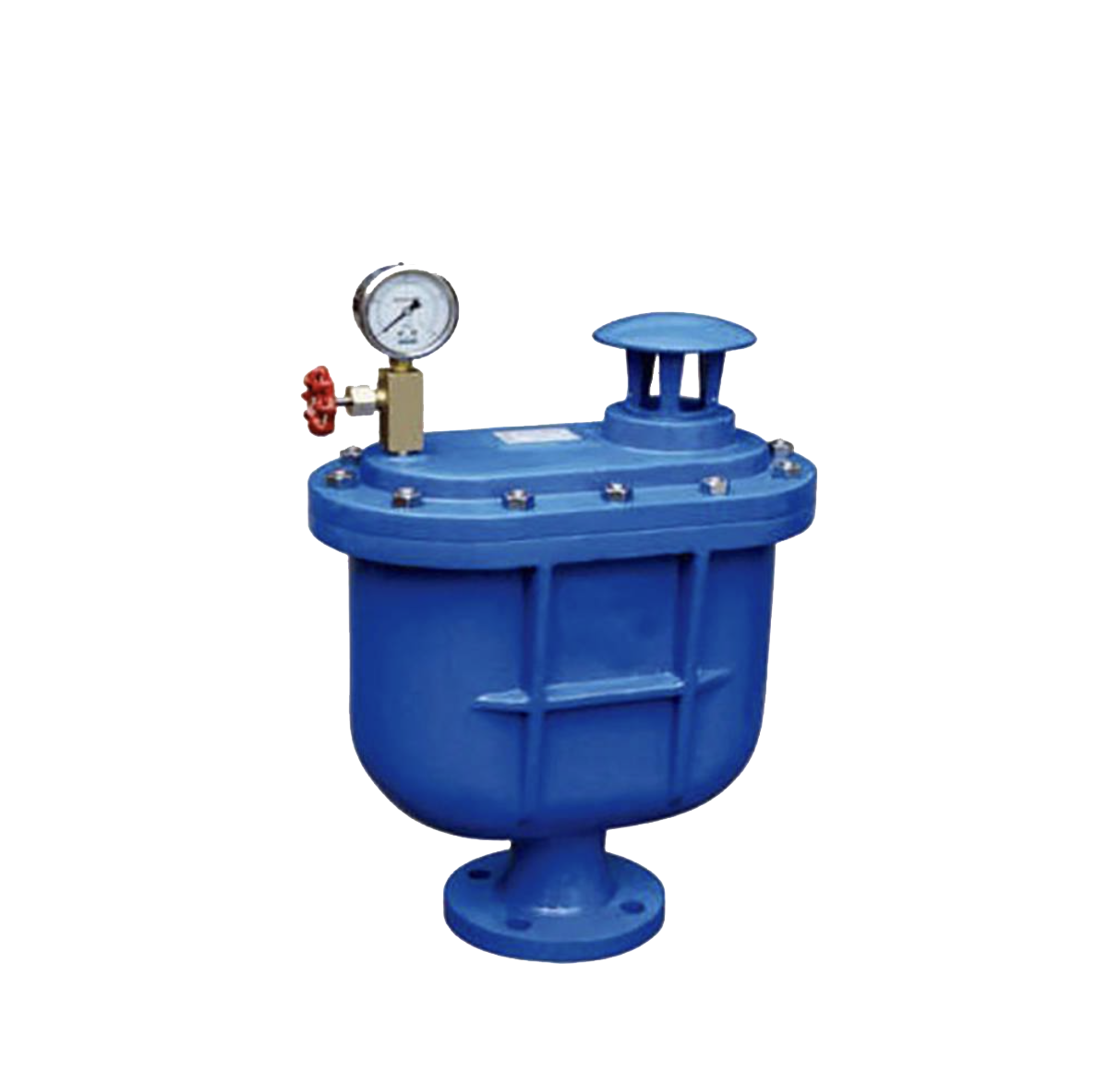
Exhaust Valve
Exhaust valve is a device used to remove gas from pipelines, widely used in urban water plants' water supply pipelines, independent heating systems, central heating systems, heating boilers, central air conditioning, floor heating, and solar heating pipeline systems. The main working principle and function of exhaust valves are to prevent gas accumulation in pipelines, improve pipeline efficiency, and reduce energy consumption. There are various types of exhaust valves, mainly including: single port exhaust valves used for exhaust in independent heating systems, central heating systems, heating boilers, central air conditioning systems, underfloor heating systems, and solar heating systems; Double port exhaust valve is suitable for pipelines with water as the medium, as a device to remove gas from the pipeline, to improve the efficiency of water delivery equipment, and to protect the pipeline from deformation and rupture; The rapid exhaust valve is the most advanced cylinder type exhaust valve in China, which can continuously discharge gas in pipelines at high speed and is suitable for various pipeline environments; Composite exhaust valves are suitable for complex pipeline systems that require the removal of large amounts of gas. The structural drawings of various exhaust valves provided below are for reference only.View details>>
-
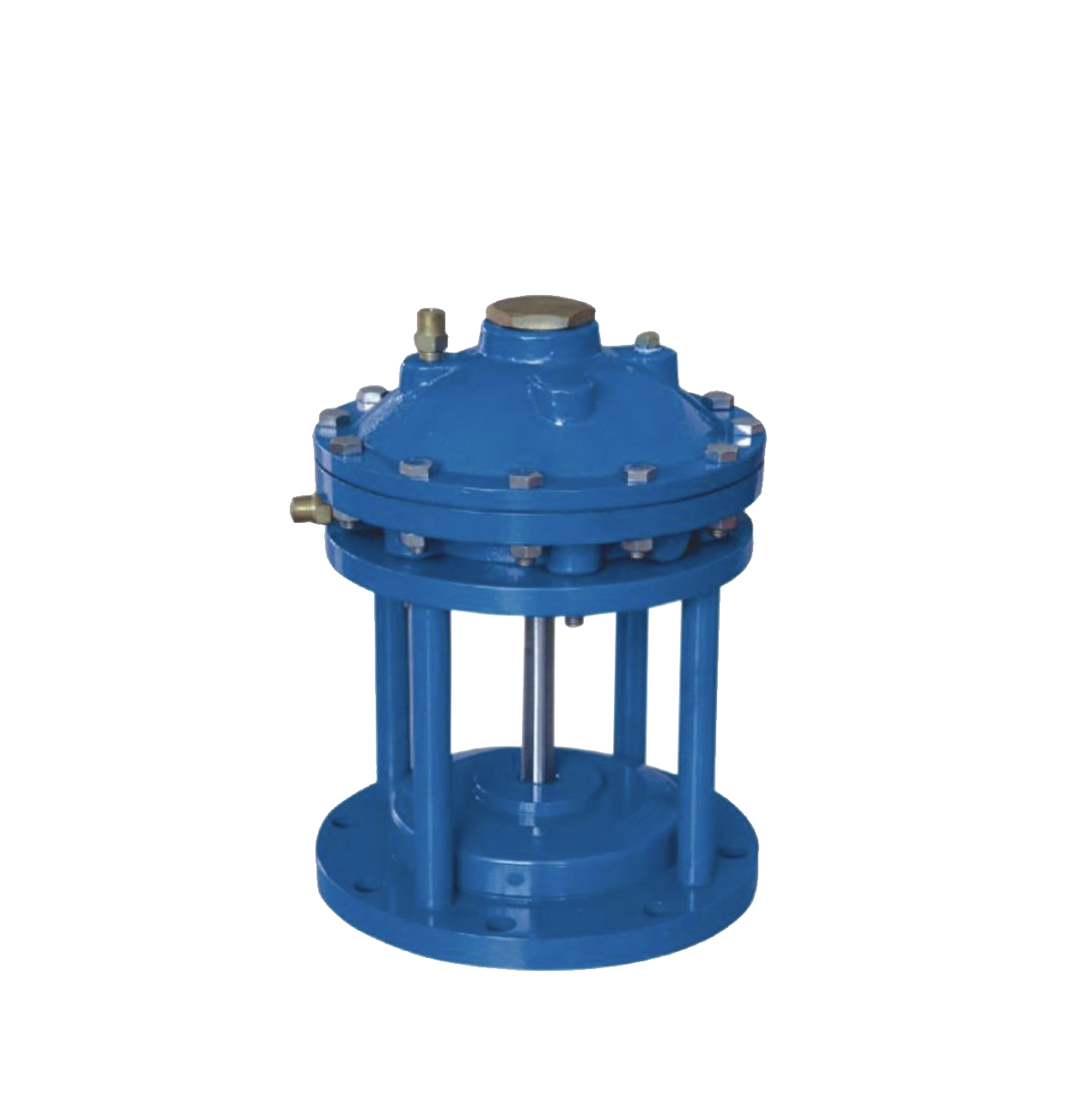
Mud Valve
Sludge discharge valve is a type of valve equipment used to discharge sludge and wastewater from the bottom of water tanks. It is widely used in the bottom of water treatment tanks such as filtration tanks, sedimentation tanks, and mixing tanks in urban water plants and sewage treatment plants. The working principle of the sludge discharge valve is to regularly open and close it to help remove sediment from the bottom of the pipeline or water tank, and maintain the smooth operation of the system. The structure of the sludge discharge valve mainly includes the valve body, hydraulic cylinder (or manual device), pneumatic cylinder, piston, diaphragm, valve stem, and valve disc. According to different usage scenarios, sludge discharge valves can be divided into two main types: diaphragm type and piston type. Diaphragm mud valves are usually composed of a valve body, upper and lower diaphragm chambers, a diaphragm, and a valve stem, while piston mud valves are composed of a hydraulic cylinder and a valve body. These designs make the sludge discharge valve have the characteristics of quick opening, quick closing, good sealing performance, and easy maintenance. The structural pictures of the sludge discharge valve provided below are for your reference only.View details>>
-
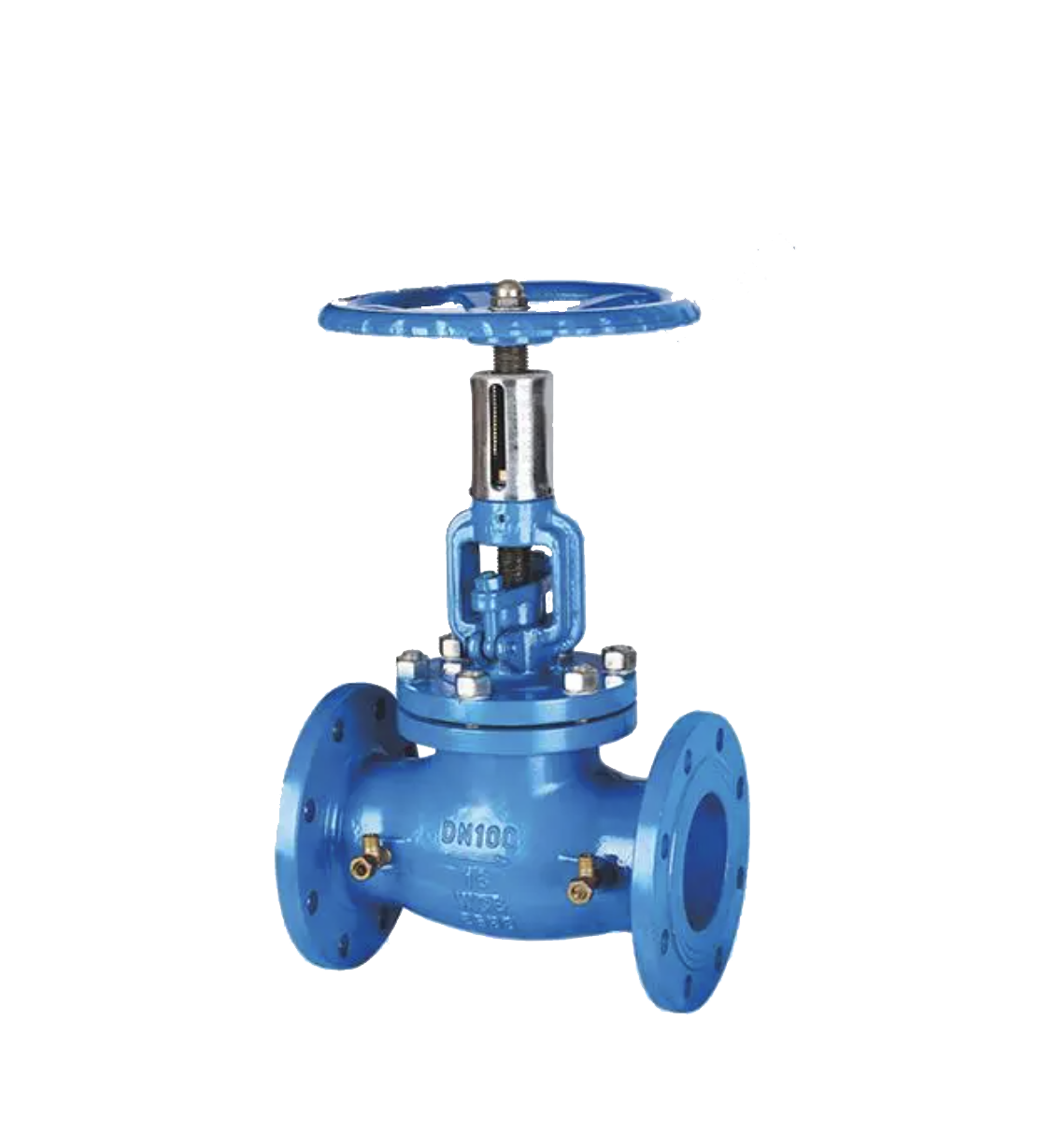
Balance Valve
The main function of a balance valve is to achieve flow balance by adjusting the relative balance of pressure on both sides of the pipeline before and after the valve or by diverting flow, in order to alleviate the pressure difference inside the pipeline, ensure that the pressure inside the pipeline is always in a relatively balanced state, and avoid pipeline rupture. Its working principle is to adjust the flow rate by changing the clearance (i.e. opening) between the valve core and the valve seat, thereby changing the flow resistance of the fluid passing through the valve. The balance valve plays a role in dynamic and static balance regulation under hydraulic conditions. It adjusts the flow rate by changing the clearance between the valve core and valve seat to alter the flow resistance of the fluid through the valve. This adjustment can be static or dynamic, depending on the design and application scenario of the valve. The static balance valve consumes excess pressure difference by manually adjusting the valve opening, eliminating hydraulic imbalance between various circuits. The dynamic balance valve automatically adjusts the resistance coefficient according to changes in system operating conditions to maintain a constant flow rate. It can effectively solve the problem of uneven flow distribution in the pipeline network, ensuring that each branch increases or decreases flow proportionally and maintaining the hydraulic balance of the system. In addition, the balance valve also has a special function of digital locking, which can lock the opening after one-time debugging through a dedicated intelligent instrument to ensure the stable operation of the system. The balance valve produced by Shanghai Meiyan Yipump Valve is widely used in various HVAC pipelines, effectively balancing pipeline pressure and playing an energy-saving and emission reducing role in central air conditioning. The following structural drawings are for reference only.View details>>

